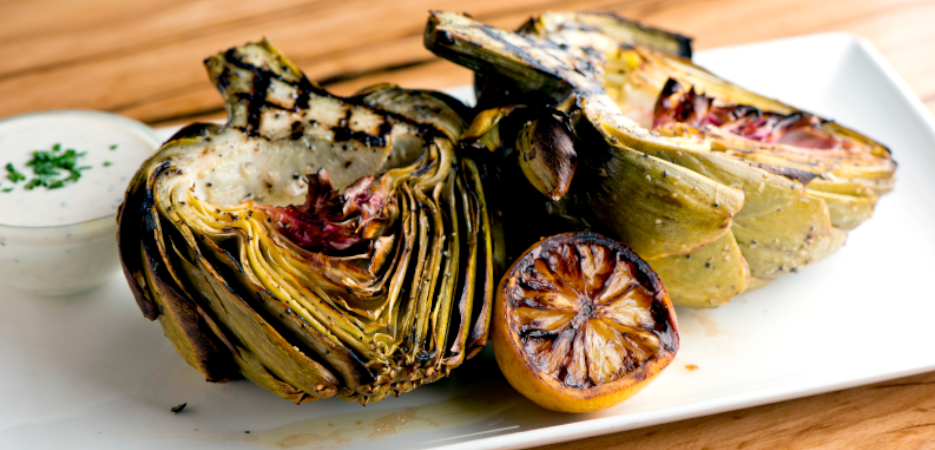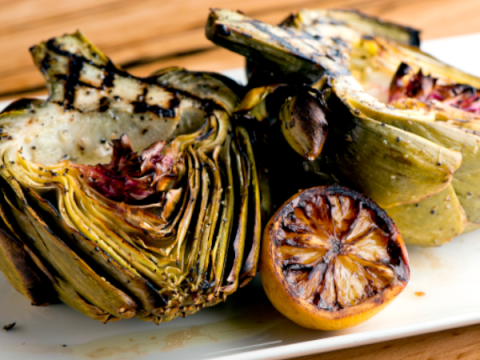The Most Underrated Fruits and Vegetables at the Market—and What to Do with Them
Globalization and technology mean we expect tomatoes and strawberries year-round—but nothing beats the fresh, seasonal produce you find at your local market. This summer, seek out these underrated gems and learn simple ways to transform them into delicious dishes.
1. Brussels Sprouts
Why eat them? Low in calories and carbs, high in fiber and vitamin C, plus potent antioxidants.
How to cook: Trim, halve, toss with olive oil, salt, and pepper. Roast at 200 °C for 20–30 minutes until golden and tender. Or shred raw into salads, grain bowls, and slaws.
2. Artichokes
Why eat them? Rich in fiber, potassium, and antioxidants; just 45 calories per cup cooked.
How to cook: Steam until leaves pull away easily, then dip in herbed yogurt or butter sauce. Or layer sliced hearts into pasta and gratins.
3. Rhubarb
Why eat it? High in fiber and vitamin K, linked to lower cholesterol and blood sugar control.
How to use: Stew with minimal sugar into compotes, fold into oatmeal, or turn into a savory chutney for pork.
4. Sea Buckthorn Berries
Why eat them? Loaded with vitamin C, omega fatty acids, and antioxidants; may support weight management.
How to use: Blend into smoothies, sweeten sparingly into syrups or jams, or stir into yogurt for a tangy boost.
5. Okra
Why eat it? Packed with vitamins A, C, and K plus gut-friendly fiber.
How to cook: Slice and sauté for gumbo, roast with spices until crisp, or pickle for snacking.
6. Gooseberries
Why eat them? High in fiber and vitamin C; linked to heart health and blood sugar control.
How to use: Fold into muffins, swirl into cheesecake, or cook down with honey into a bright compote.
7. Kohlrabi
Why eat it? A crunchy crucifer with vitamin C and potassium.
How to cook: Peel, julienne raw into slaws, roast cubes with olive oil, or add to soups for texture.
8. Fennel
Why eat it? Aromatic bulb rich in fiber and antioxidants.
How to cook: Thinly slice for salads, braise wedges with white wine, or roast with citrus and herbs.
9. Dragon Fruit
Why eat it? A striking, antioxidant-rich tropical fruit.
How to use: Cube into smoothie bowls, grill halves with honey glaze, or blend into popsicles.
10. Jícama
Why eat it? Low-calorie tuber high in vitamin C and fiber.
How to cook: Peel, slice into sticks for dipping, shred raw into salads, or toss into stir-fries for crunch.
11. Romanesco
Why eat it? A fractal cousin of cauliflower with vitamin C and fiber.
How to cook: Roast florets until charred, steam then blend into pesto, or grill thick slices.
12. Persimmons
Why eat them? Sweet, vitamin A-rich fruit at peak in autumn.
How to use: Slice into salads, bake into tarts, or dry into chewy chips.
13. Swiss Chard
Why eat it? Leafy green loaded with vitamins A, C, and K.
How to cook: Sauté stems first, then leaves with garlic; fold into quiches or lasagnas.
14. Fuyu Persimmon
Why eat it? Firm, non-astringent variety you can eat like an apple.
How to use: Dice into salsas, poach in spiced syrup, or roast with root vegetables.
15. Celery Root (Celeriac)
Why eat it? Earthy tuber high in fiber and vitamin K.
How to cook: Peel and cube into gratins, mash like potatoes, or slice thin into remoulade.
16. Medjool Dates
Why eat them? Natural sweeteners rich in potassium and fiber.
How to use: Stuff with nuts for snacks, blend into energy balls, or chop into salads.
17. Watercress
Why eat it? Peppery green high in vitamins A and C.
How to cook: Toss raw into soups just before serving, blend into pesto, or top fish with fresh sprigs.


